| Cephalodella gigantea; lateral view; probably the largest Cephalodella species. Total length of this specimen is about 600 µm (1). |
| |
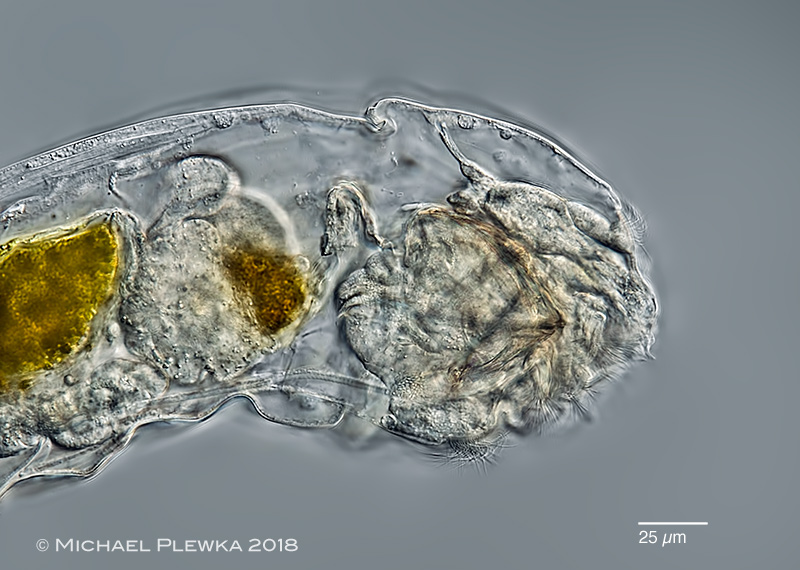 |
| Cephalodella gigantea; head, lateral view. This species has no eyespots. The dorsal antenna is unconspicuous (arrowhead). (1) |
| |
 |
| Cephalodella gigantea; male specimen from (3), slightly compressed by coverslide. IR: intracytoplasmatical rods; P: penis; Sp: sperm cells. (2) |
| |
 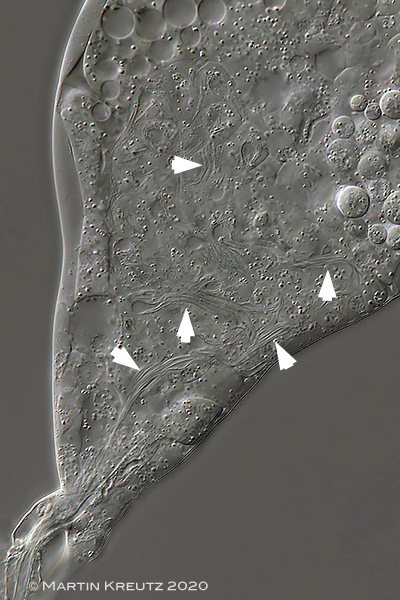 |
| Cephalodella gigantea; left: crop of the above image. The arrowheads mark the ciliated duct of the copulation organ.Right image: posterior part of a male compressed by coverslide. The arrowheads point to some of the intracytplasmatical rods. (2) |
| |
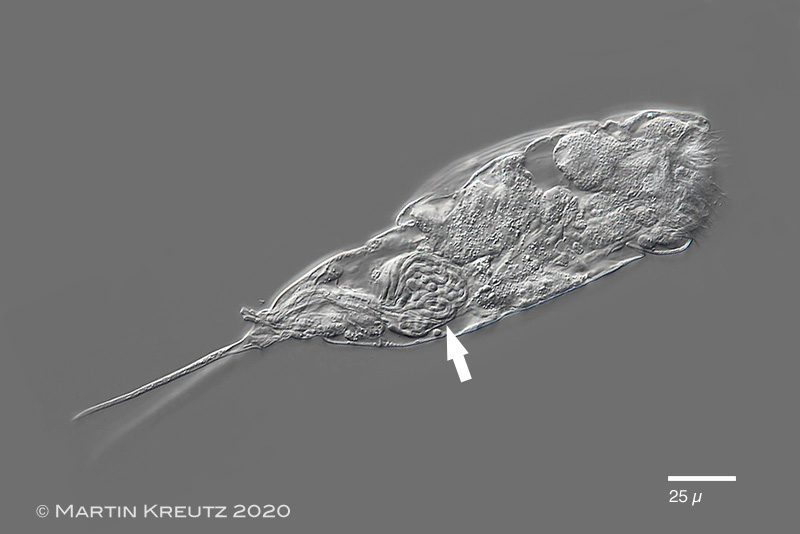 |
| Cephalodella gigantea; another male specimen. Visible are the sperm cells (arrow). (3) |
| |
| |
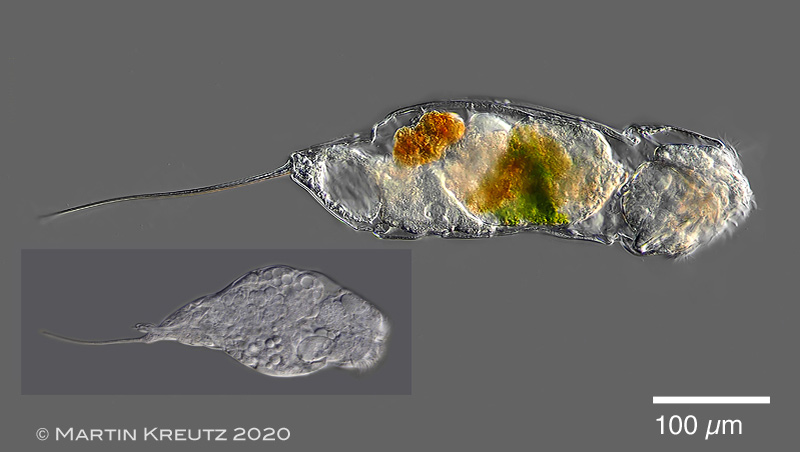 |
| Cephalodella gigantea, size comparison between female (upper specimen) and dwarf male. (2) |
| |
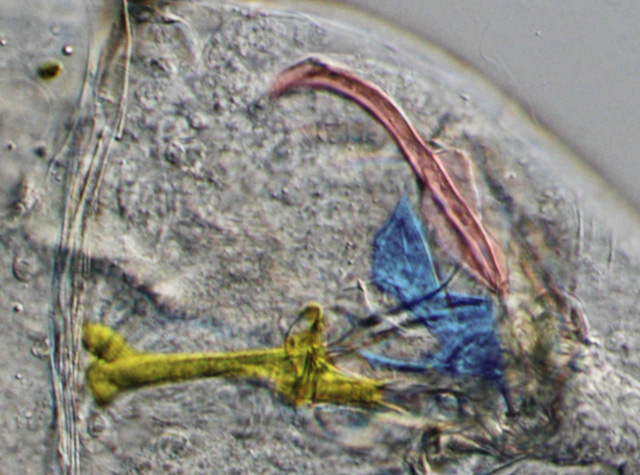 |
| Cephalodella gigantea; trophi, artificially colored. Yellow: fulcrum; red: manubrium; blue: subunci. |
| |
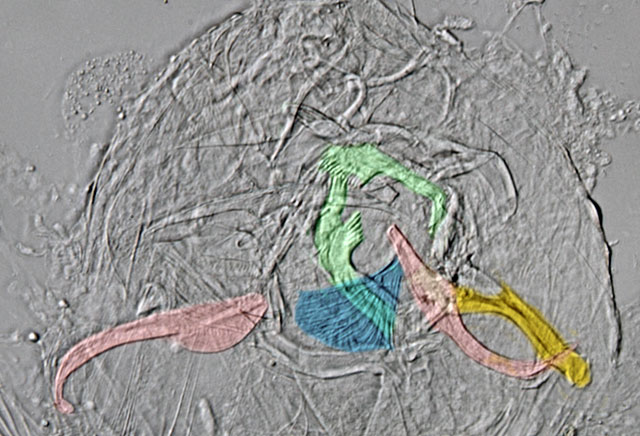 |
| Cephalodella gigantea; trophi, artificially colored. Yellow: fulcrum; red: manubrium; blue: subunci, green: rami. The manubria are different form the ones of Cephalodella teniuseta. |
| |
| Images of specimens from sample (2) and (3) courtesy of Dr. Martin Kreutz, realmicrolife. |
| |
|
|
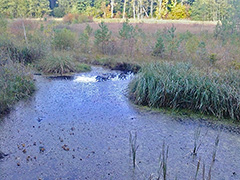 |
| Location (1); (2); (3): Simmelried near Konstanz, BW, Germany, pond |
| |
| Habitat (1); (2); (3): in the boundary layer betwen the water and the anoxic mud (upper 10cm of the mud) |
| |
| Date : 16.8.2009 (1); 05/2020 (2); 07/2020 (3) |
| |
|
|
|
|
|
| |
| |
| |
|
|